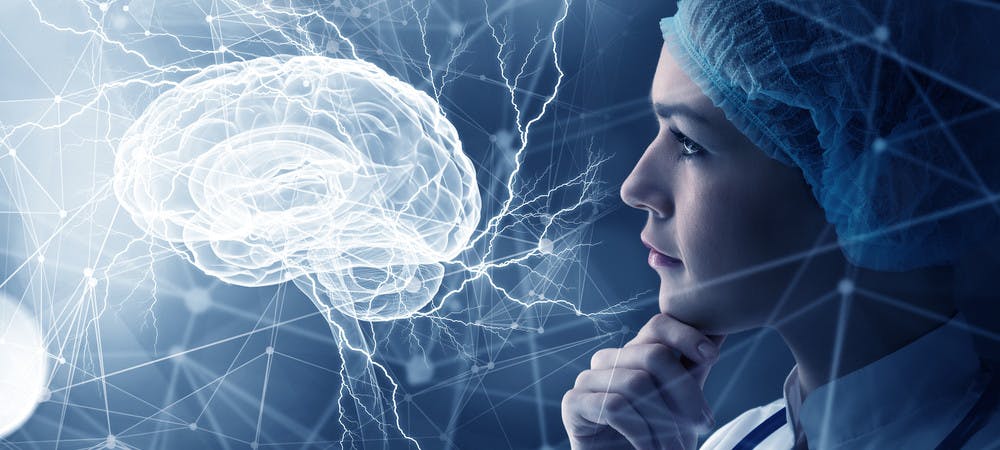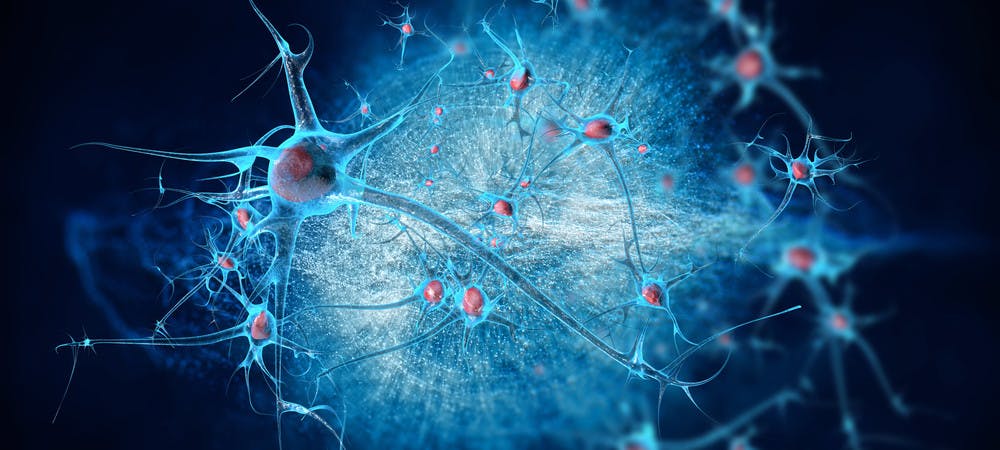Professor Kai Bongs, Director of the UK Quantum Technology Hub for Sensors and Metrology, Professor of Cold Atoms Physics, and Lead of Midlands Ultracold Atom Research Centre.
Professor, how can quantum technology help us better understand our brain and its potential? Will we be able to apply quantum sensors to advance our knowledge about the interaction between anatomy, emotions and behavior?
Professor Bongs: Quantum technology today is mainly foreseen as four large strands. It’s all about our ability, which has emerged over the last few years, to control and manipulate single quantum particles. They can create superposition and entanglement as a new resource for very precise measurement, quantum computation, quantum communication, and quantum imaging. All these are areas of quantum technology. The ones most relevant to my expertise are quantum sensors, where for healthcare, in particular, magnetic sensors, or so-called optically pumped magnetometers are of very high relevance, because they offer a sensitivity which is similar to what you get with SQUIDs or even better, which are superconducting quantum interference devices, that up to now are the most sensitive magnetic sensors. The new generation of quantum technology sensors can be even more precise, and allow us to see when neurons in the body fire, so any electrical signals will create a magnetic field. Picking up these magnetic fields from any electrical activity in the body is what these quantum sensors enable. The main example we are focusing on today is the brain. Whenever the brain thinks, neurons are firing in the brain in an oscillatory manner, which means they are oscillating electrical currents, very, very tiny ones, which create very small magnetic fields. But the sensors are sufficiently precise to pick these fields up and by that, detects brain activity. That is a completely novel way of looking into the brain.

Whenever the brain thinks, neurons are firing in the brain in an oscillatory manner, which means they are oscillating electrical currents, very, very tiny ones, which create very small magnetic fields.
It’s not just where is what but what parts are active. Magnetoencephalography has been doing that with SQUIDs for a while. The SQUID systems are mainly limited to hospitals because they need cooling with liquid helium, so cryogenic enclosures. It’s a very rigid setup, usually, which doesn’t allow adaptation to the brain or different sizes of people. In particular, it’s difficult to investigate children in the existing machines. They are quite expensive to purchase and to run. So what quantum technology brings is a room temperature technology, which is very flexible and can be put into some sort of swimming cap or helmet, which are adaptable to whatever skull size and maybe, more importantly, they can be used while the patient is moving. This opens up completely new possibilities of diagnosis.
Because so far with magnetoencephalography machines people have to stay rigid. So you can only interact with them in a nonmoving fashion and look at the brain reacting to questions or optical triggers. If you can start looking at people while they’re moving, you can see brain activity and brain function while they’re balancing a ping-pong ball, which has been demonstrated by our colleagues in Nottingham or you can observe children in the development phases while they are crawling and doing different motional activities. Children might not be easy to confine in a rigid frame so you can study the development of brain conditions during the very crucial development phase from the child to the adult brain.
When will quantum sensors be in use to detect conditions like autism, schizophrenia and early symptoms of dementia?
Professor Bongs: We don’t quite know where it will all lead to. We have a journey in front of us. Magnetoencephalography currently has only one application which is clinically approved and is paid for, for instance, in the U.S. by the health insurance companies, which is for epilepsy, where you need to identify the epilepsy region in the brain before you do a surgical operation to deactivate epilepsy centers. There are developing activities in trauma. The Football Association is looking at ways to assess brain damage due to footballers crashing into each other, and having a long-term observational tool, which can predict if you will get any brain conditions or brain issues after a concussion. So as a new tool to look into trauma-related activities, these are on the way to approvals and further development. For all other areas, it’s a research tool at the moment and we will have a long journey with this new tool of neuroscience research to look into finding biomarkers for dementia, child concentration deficit disorder, schizophrenia and other brain conditions. Some biomarkers will be found. I think we can be quite confident about that. But can we get them with high enough probabilities so that they can then go into clinical trials and become a routine diagnostic tool for brain conditions? Also maybe for monitoring drugs to health rate conditions, how they work and how long they work, to monitor them over a long time. As always, with medical or clinical research, we need to be very sure that there is a benefit and there are no negative side-effects from what we are doing through the respective cycles of research, evaluation, validation, and quality assurance.

If you can start looking at people while they’re moving, you can see brain activity and brain function while they’re balancing a ping-pong ball, or you can observe children in the development phases while they are crawling and doing different motional activities.
Can we estimate when those technologies are going to be available to patients? Is it possible to say whether this is going to be one or 10 years from today?
Professor Bongs: I would rather point at the 10-year time frame, because just the clinical trials will take several years. So patients might encounter these technologies quite soon in research environments, and be part of studies to evaluate what these technologies can do. But before it becomes a clinically approved technology, one has to go through several years of trials, approvals and administrative processes. So it will not be very, very fast.
Your team is also evaluating the potential for enabling this technology in mind-directed game-playing. What role do quantum sensors play in this area?
Professor Bongs: At the moment, they don’t play any role but I think they have great potential and I am quite excited about this. What you can buy nowadays are electroencephalography-type tools where you can glue a few electrodes on your skull and use that to steer some games or at least assess current mood. It has a hurdle of entry because you have to physically attach electrodes to your skull and contact is not always optimum, or it’s not so easy to ensure. So what the quantum centers can offer is contactless technology so that you can have more or less a pair of glasses, with sensors built into them to pick up what’s happening inside the brain. Potentially in the future, steer applications maybe, first of all, simple yes/no decisions for interfacing with machines so that operators don’t have to use their hands or put them in dangerous positions. As we learn more and more about brain functions, and which areas of the brain are active under certain conditions, these might develop into tools toward steering computer games or more sophisticated machinery.

What the quantum centers can offer is contactless technology so that you can have more or less a pair of glasses, with sensors built into them to pick up what’s happening inside the brain.
It is quite exciting where the development of this technology is going. If there’s so much progress already, where do you see that technology going in the future?
Professor Bongs: I think we will see a sequence of first learning more about medical applications and at the same time having very simple brain interfacing functions for maybe steering simple games to more sophisticated knowledge of what the brain is doing, and quite intense diagnostic tools. One might even speculate in the future having a feedback mechanism where for instance, in the simplest case, if one can integrate this technology in an aesthetically acceptable fashion, people could possibly wear it outside in the normal environment. If you have dementia and are taking dementia drugs, you could monitor if they are still working and alert you that it’s time to take the next pill to help ensure the brain function or the drugs are still supporting in the way they should. So, things like simple feedback loops with interaction with humans. Some neuroscientists are also experimenting with low-level electric fields which are injected into the brain to help brain function or concentration. Also, you could imagine feedback loops to automatically alert when a condition is recognized to ensure optimum function and prevent brain damage. Of course, such solutions need to be looked at very carefully in terms of ethics. We will see if things go in this direction or not in the future.
It seems there’s still a lot of potential in terms of opportunities for using this technology in the healthcare sector and also, to hopefully, help us to live longer and healthier.

